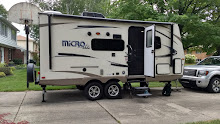Tue. April 4: We traveled at night but not very far
upriver to our first stop.
 |
| The tiny white arrow shows our first stop |
As we would do most days, we ate breakfast (and,
later lunch) on the “Front Porch”, an informal buffet meal much like in the
dining room but not as much variety, and there is no menu from which to order.
The advantage of it is that we could eat at tables outdoors on the bow and
enjoy the beautiful weather. The first stop was near Vacherie, Louisiana, where
we visited a Creole plantation with our Road Scholar group, followed by a
second plantation, which was across the road from where the boat had docked, with
other American Queen passengers. Our bus
and driver, Nate, from New Orleans were supposed to follow along on land to be
with us for the next five days but he was stuck in traffic by an accident so an
American Queen bus took us a few miles down the road to Laura. Like all the
plantations that used to line both sides of the river, Laura was a sugarcane
plantation built in 1805. It was owned by
the same family (rife with intrigue and scandal) for four generations right through the Civil War. When
emancipation, came many of the slaves stayed on as sharecroppers, sometimes
moving their original cabin miles inland from the river. The plantation and
some outbuildings are restored now and it is at the forefront of interpreting
the Creole slave experience in Louisiana. The following is from the Laura website,
to explain what Creole means: Creole is the non-Anglo-Saxon culture and
lifestyle that flourished in Louisiana before it became a part of the United
States in 1803 and continued to dominate South Louisiana until the early
decades of the 20th century. Native birth, the French language and Roman
Catholicism were the benchmarks for identity in this Latin-based society that
included people of white, black and mixed-race ancestry. Culturally, influences
from three groups--west
Europeans, west Africans, and significant input from Native Americans--
combined to become Louisiana Creole culture. The Creole functioned
in an elitist structure, based on family ties. In its philosophy, economics and
politics, European custom and modern thought were thrown out and, in their
place, a strict, self-serving pragmatism was born out of the isolation and
desperation that characterized Louisiana in her formative years. The earliest,
tragic lessons of survival in Louisiana created a family-oriented world that
would, for centuries, put little value in public education or public works and
even in the rule of law. Creole Louisiana was a place where class, not race,
determined social status, where rural life conformed to rigid disciplines,
where human bondage created wealth, where adherence to the family business and
tradition was paramount, where women ran businesses and owned property, where
democratic ideals and individualism were held in contempt and where, until the
20th century, people spoke French and lived this way, separate from the
dominant White-Anglo-Saxon-Protestant American culture.
 |
| Sugar cane fields beside the road on the way to Laura |
 |
Laura is a typical Creole plantation house with its bright colors
and low profile, built on stilts to avoid flooding by the River. |
 |
This map shows how the Mississippi on both sides was solid
with narrow, deep sugar cane plantations. |
 |
| Mounting the stairs to the living quarters on a raised level. |
 |
| Our very knowledgeable guide tells us more about the family history |
 |
| Laura's dining room |
 |
| A typical slave cabin, which would hold two large families |
On our return we were on
our own to visit Oak Alley, which represents what many people envision a
plantation home to be: a graceful Greek Revival mansion, built in the late
1830s, with beautiful gardens and well-maintained outbuildings. It was undamaged
by the Civil War, changed hands several times, then acquired in a deteriorated
state by the Stewart Family. Now restored, it is a National Historic Landmark.
 |
The walk up to Oak Alley is lined with 300+ year old live oaks
of unknown origin which predate the house itself. |
 |
| The two of us are dwarfed under one of the largest trees. |
 |
| Greek Rivival architecture, framed by the live oaks |
 |
| The gracious first floor hallway at Oak Alley |
 |
The dining room at Oak Alley is highlighted with the wooden "Shoo Fly"
over the table that would be kept in motion by a small slave boy. |
 |
Look carefully and you will see the American Queen
moored at the other end of the alley of live oaks. |
We
had to be back onboard by 12:30 and had the afternoon to enjoy the calliope
music as we departed, the sun on deck, and our first lecture by our Road
Scholar expert, Brian. He told us all about the history of “La Nouvelle Orleans”,
from visits by Alvarez de Pindea in 1519, Hernando de Sota in 1541, and La
Salle in 1682 to its settlement for France in 1718 by brothers Iberville &
Bienville through the French and Indian War when France lost it to Spain for
three years before gaining it back, and then finally its acquisition by Thomas
Jefferson in the Louisiana Purchase. By the time he finished our heads were
spinning with information! We enjoyed dinner in the dining room, followed by “A
Southern Celebration” in the theater by the American Queen Ensemble and with
music by the Steamboat Syncopators.
 |
This arrangement of live orchids was outside the dining room
and stayed this beautiful for the whole week. |
 |
| There was a lovely sunset that evening |
 |
We stayed up until midnight enjoying the balmy air on deck
in order to see the lights of Baton Rouge as we passed through |




























































